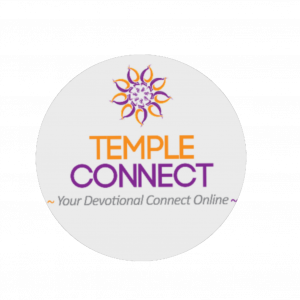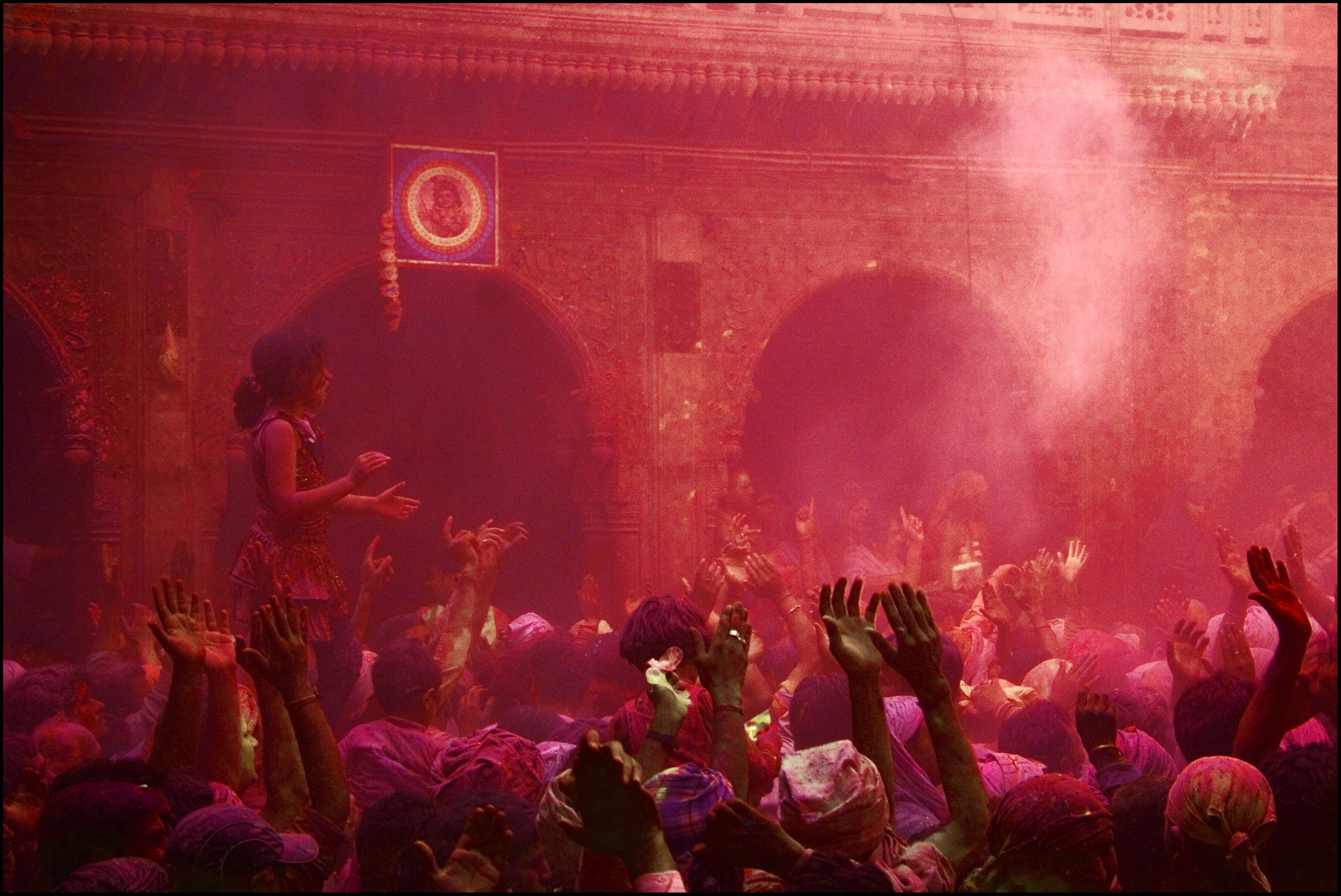Narasimha Jayanti celebrates the birth anniversary of Narasimha Bhagawan, and is observed on Vaishakha Chaturdashi of Shukla Paksha. Narasimha is the fourth incarnation of Bhagawan Vishnu. As mentioned in Hindu scriptures, Bhagawan Vishnu appeared in the form of an aggressive and violent creature, which was half human and half lion, to kill an asur named Hiranyakashipu. He appeared with the face of a lion and the trunk of a man. Vishnu devotees observe fast on this day.
Narasimha Jayanti
The Dasavataras of Bhagawan Vishnu are meant to redeem the world from all evil and re-establish righteousness for the benefit of mankind. Narasimha, the ferocious avatar of Vishnu, was also born with an aim to destroy and attain victory over Asur King Hiranyakashipu, and put an end to his cruelty. In this avatar, Vishnu appeared as half lion and half man, to protect his devotee and ardent admirer, Prahlad. Hirayakashpu had the boon that he could not be killed during day or night, inside or outside, by any Bhagawan, asur, animal or man. Thus, Vishnu took the form of Narasimha, partial lion and partial man, with claws in hand and killed him at the twilight when it was neither day, nor night. Narasimha is a Sanskrit word made of two words, ‘nar’ meaning human, and ‘simha’ meaning lion. He is also known by many other names such as, ‘Hiranyakashipu Vamsa’ or the one who killed Hiranyakashipu, ‘Bahiravadambara’ or one whose roar causes horror, ‘Karala’ or the one who has sharp teeth projecting out and ‘Agni Lochana’ or the one who has fire in eyes. Narsimha Jayanti is celebrated on the 14th day of Shukla Paksha of Vaishakha month, or Vaishakha Chaturdasi.
ORIGIN AND SIGNIFICANCE:
As mentioned in Bhagavad Purana, there was a great sage, Kashyap who had two sons Hiranyakashipu and Harinyaksha. Vishnu, in his 3rd avatar as Varah, killed Harinyaksha to protect Earth from his evil deeds. Agonized by his brother’s mutiny, Hiranyakashipu held great enmity for Vishnu, and decided to avenge his brother’s death. He prayed strongly to Brahma, and asked for a boon by which, he can be killed neither inside nor outside of his residence, neither on land, nor water nor air, neither by any Bhagawan nor an animal nor an asur, neither by a man nor a woman, neither in the day nor at night, and not by any weapon that existed on earth. Brahma granted him the boon. This boon made Hiranyakashipu invincible, and he ruled all the three loks. Hiranyakashipu had a son Prahlad, who, in spite of being born in an asur family, was a great devotee of Vishnu. Hiranyakashipu could not accept his own son’s faith towards his biggest enemy, Vishnu. He tried to kill Prahlad many times, but all his efforts went in vain, because Vishnu always protected Prahlad, out of love for his devotees. One day, in order to prove that Vishnu was not omnipresent, Hiranyakashipu banged his weapon hard on a pillar of his palace, and asked Prahlad to prove his Devta’s existence in it. Vishnu emerged from the same pillar as Narasimha, and carried Hiranyakashipu to the doorstep of the palace, placed him in his lap and disfigured his bowel with his sharp claws. This bypassed the boon, as it was twilight (neither day nor night), and he placed him in his laps (neither on land, not water, nor air), and attacked him with his claws (which was not classified as a weapon), on the doorstep of the palace (which was neither inside, nor outside the palace). He finally killed the asur. Since then, devotees started celebrating the great festival of Narasimha Jayanti.
Significance:
Narasimha avatar is an incredible form of Shri Hari to kill Hiranyakashipu and to protect his own devotee. It’s an iconic avatar, celebrated as a triumph against all odds and victory over adharma. All one needs is to call Sri Hari in faith. Narasimha Bhagawan is one of the widely worshipped Bhagawans in India. Devotees observe fast with proper rituals and with pure heart, to win the battles against evil and lead a peaceful life.
DIETIES ASSOCIATED WITH THE FESTIVAL:
Narasimha Bhagawan is the fourth incarnation of Vishnu. Thus, Shri Hari along with Lakshmiji, is worshipped on the auspicious occasion of Narasimha Jayanti.
CUSTOMS, TRADITIONS AND RITUALS:
On this day, special puja is performed for Narasimha Bhagawan, during the pradosh period, as it is believed that Narasimha appears during sunset on Chaturdashi. Special puja is performed with murti of Narasimha Bhagawan. Keeping a vrat for this day is of great significance. Donation of food, clothing and metal is considered beneficial on the occasion of Narasimha Jayanti. Special food preparations for this day are made. Panaka, which is actually a cool sweet drink made of tulsi leaves, sugar and khas, is specially prepared on this day. Halwa made from moong dal or chana dal is also a prominent speciality of the day. Devotees also study the episode of Narasimha avatar in Bhagavad purana. The festival is considered to be very auspicious if it comes on Saturday with Swathi Nakshatra.
PUJA VIDHI AND KATHA:
Vidhi:
- Wake up in Brahma muhurta and take a bath.
- Take an oath of performing puja with all rituals.
- Observe fast for the whole day without any grains or cereals, and visit the temple.
- Clean the room and chowki where worship has to be done.
- Wash and clean the moola virat of Bhagawan Narsimha and Lakshmi ji.
- Dress Narsimha Bhagawan in yellow clothes.
- Spread a yellow cloth on the chowki, where the murti is to be placed.
- Place the murti of Narasimha Bhagawan and Lakshmiji in the east position of the house, facing the west.
- Keep fruits, flowers, sandalwood, camphor, roli, incense, saffron, panchmeva, coconut, akshat, gangajal, black sesame and pitambar for worship.
- Also place Kalash with coconut on top and mango leaves on the edge of kalash.
- Make a Ganesha with betelnut and pray to him.
- Offer prayers to Navagraha and ignite Ashta Deepak and dhoop.
- Offer an arghya to Bhagawan Narsimha and chant the mantra “Parithranaya Sadhunaam Jatho Vishnornrikesari”.
- Offer Pulihora as naivedyam.
- Offer other sweets like moong dal halwa and chana dal halwa, to Bhagawan
- Listen to the tale of Narasimha Bhagawan and chant Mantra:
Ugram ViramMaha Vishnum JvalantamSarvato Mukham NirsimhamBhishnam Bhadram Mrutyar Mrityum Nmamy Aham.
- Break the fast on the next day, after visarjan puja, along with aarti, and donation to Brahmin.
- One should also chant Narasimha mantra 21 times as: SRI NARASIMHA JAYA NARASIMHA JAYA JAYA NARASIMHA.
Katha:
- Once upon a time, in a village named Avanti Nagar, there lived a priest named Anandacharya. He served at the Narasimha temple in the village. He and his wife prayed daily so that the couple could be blessed with a kid. One day, Narasimha Bhagawan came in his dreams and told him to perform Narasimha vrat, and a Brahmin named Vishwananda would help him to do the rituals. Soon, the Anandacharya met the Brahmin, and completed the vrat procedure. They were blessed with a boy and lived happily ever after.
- Once there was a gentle king named Vikramsingha, of the Kalinga Dynasty, who had fierce rivalry with the neighbouring state of Kosala. Vikramsingha wished to put an end to this, through a war. When he travelled, he came across a Narasimha temple and promised that if he won, he would observe a vrat. He won the battle but forgot his promise. This angered Bhagawan Narsimha, and he paralyzed Vikramsingha. Later, one night, Vikramasingha had a dream of roaring lions, and he remembered his promise. Soon, he performed a vrat and got free from his curse.
- Srinivas Acharya was a priest in the Narasimha temple of Krishnagiri. He had two beautiful daughters. On the day of their eldest daughter, as they crossed the jungle to go to the venue, some thieves attacked them. People shouted and prayed to Narasimha for help. Soon Bhagawan came in the form of a lion and helped them. They were saved from the hands of the thieves and the marriage also conspired successfully.
- Ramayya was a trustee of the Narasimha temple in Kalinga. He was very honest and allocated all donations honestly for the benefit of the temple. But there was another man Chalamayya, who was very jealous of Ramayya, and replaced him as a trustee. He used to carry all the charity with him. On this occasion, people of Kalinga prayed to Narasimha. Chalamayya saw a roaring lion in his dreams and the next day, he saw that everything in his house got destroyed. He understood that all his evil deeds have led to his misery. He then worshipped Narasimha Bhagawan for forgiveness and atonement of his sins.
- There was a carpenter named Kurmandha, in Ratnagiri. He was childless even after many years of marriage. Once he went to a merchant’s house and saw the merchant performing Narasimha vrat. Kurmandha listened to the first two stories of Narsimha and then left for work. Soon Kurmandha and his wife were blessed with a boy, but he was crippled. One day when a sage saw the boy, he told Kurmandha that his son was crippled because Narasimha Bhagawan was angry about Kurmandha leaving the vrat katha half way. The sage asked Kurmandha to take his son to Narasimha temple and listen to all the five stories. Kurmandha did the same and soon his child walked normally. Thus, he remained a devotee of Narasimha Bhagawan for the rest of his life.
CELEBRATIONS ACROSS THE COUNTRY:
Narasimha Jayanti is a festival to celebrate the birth anniversary of Bhagawan Narasimha, and also victory of dharma over adharma. Generally, worshipers observe vrat for the whole day and perform abhishek and keertan at dusk period of the day. Tadawas, a village in Rajasthan, celebrates Narasimha Jayanti with great enthusiasm. Thousands of people from nearby villages attend this festival to enjoy the Narsingh leela. Two avatars of Vishnu, Narsimha and Varah, are the most fascinating characters of this mela.
Some of the temples in India that celebrate the festival enthusiastically are:
- Lakshmi Narasimha temple in Mangalagiri, Andhra Pradesh
- Prahlad ghat in Hardoi, Uttar Pradesh
- Shri Lakshmi Narasimha temple in Maharashtra
BENEFITS OF CELEBRATING NARASIMHA JAYANTI:
Narasimha Jayanti is celebrated with an aim of removing adharma, and walking on the path of Dharma and righteousness. When one observes fast on Narasimha Jayanti in the right manner, one gets blessed with many benefits such as:
- Success in legal issues.
- Protection from diseases and ailments.
- Improvement in health, peace and prosperity.
- Overcoming financial crisis.
- Child and good health of children
Bhagawan Narsimha blesses his devotees with all his compassion and love, and most importantly guides them in following the right path in life.



